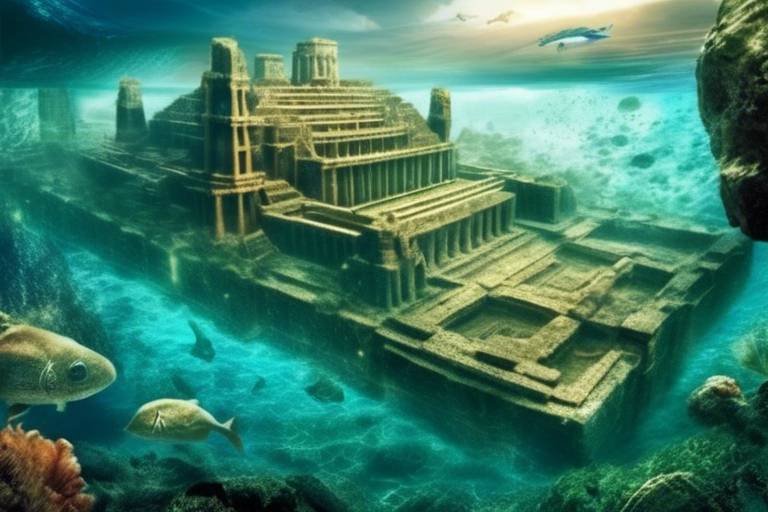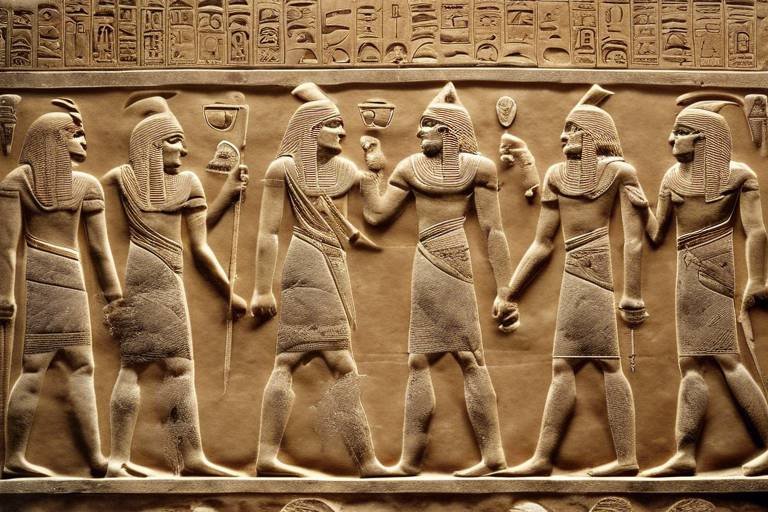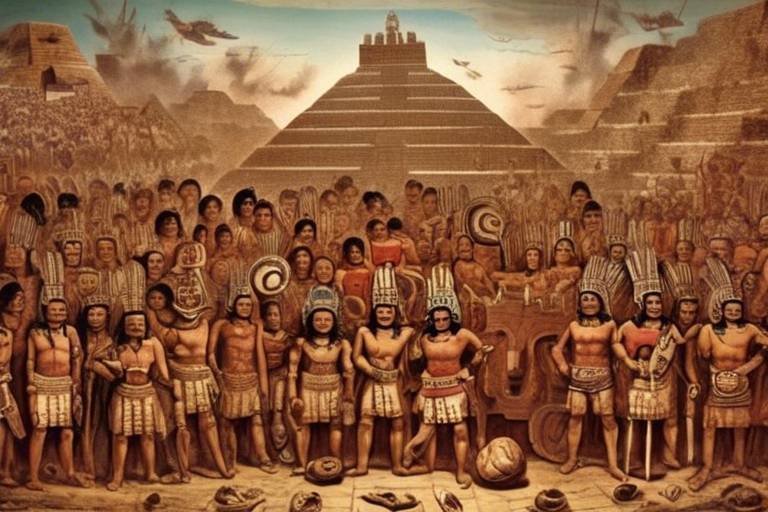The Secrets of the Ugaritic Civilization
The Ugaritic civilization, shrouded in mystery and intrigue, holds within its ancient ruins the secrets of a bygone era. This enigmatic civilization, discovered in the modern-day region of Syria, has captured the imagination of historians and archaeologists alike, offering a glimpse into a world long forgotten. The significance of Ugarit in history goes beyond mere archaeological findings; it delves into the very essence of culture, language, and the evolution of writing systems.

Discovery of Ugarit
Exploring the ancient Ugaritic civilization and its significance in history, shedding light on its culture, language, and contributions to the development of writing systems.
Uncovering the archaeological site of Ugarit in modern-day Syria was a monumental discovery that revolutionized our understanding of the ancient Near East. The excavation of Ugarit revealed a thriving urban center that flourished during the Late Bronze Age, providing valuable insights into the daily life, trade networks, and cultural practices of this ancient civilization.
The findings at Ugarit included a wealth of artifacts, such as clay tablets inscribed with the unique Ugaritic alphabet, administrative documents, religious texts, and literary works. These discoveries not only showcased the advanced writing system of the Ugaritic people but also offered a glimpse into their religious beliefs, economic activities, and social structures.
The significance of Ugarit in the archaeological world cannot be overstated, as it has provided researchers with a treasure trove of information that has helped piece together the puzzle of ancient civilizations in the Near East. The discovery of Ugarit has opened a window into a world long forgotten, allowing us to appreciate the rich cultural heritage and historical legacy of this enigmatic civilization.

Ugaritic Language and Literature
The Ugaritic language and literature hold a unique place in the realm of ancient civilizations, offering a glimpse into the cultural richness and intellectual depth of the Ugaritic people. The Ugaritic alphabet, consisting of 30 letters derived from cuneiform symbols, is a testament to their advanced writing system, predating many others in the region. This alphabet was used to inscribe a variety of texts on clay tablets, providing valuable insights into the religious beliefs, myths, and daily life of the Ugaritic society.
One of the most fascinating aspects of Ugaritic literature is its religious texts, which shed light on the complex pantheon of deities worshipped by the Ugaritians. The myths and rituals depicted in these texts not only reveal the spiritual practices of the civilization but also establish connections to other ancient cultures in the Near East. Through the study of these religious texts, scholars have been able to unravel the intricacies of Ugaritic cosmology and the role of divinity in their society.
Moreover, Ugaritic literature extends beyond religious texts to encompass a wide range of genres, including epic poetry, hymns, and administrative documents. These literary works not only showcase the linguistic prowess of the Ugaritic people but also provide valuable insights into their social structures and governance systems. By delving into the literary corpus of Ugarit, researchers have been able to reconstruct aspects of daily life, economic activities, and trade networks that characterized this ancient civilization.
The Ugaritic language, with its unique phonology and grammar, has posed challenges and opportunities for linguists and philologists seeking to decipher its complexities. Through the meticulous study of Ugaritic texts and comparative analysis with other Semitic languages, scholars have made significant strides in understanding the linguistic nuances of this ancient language. The preservation of Ugaritic literature not only enriches our knowledge of the past but also serves as a testament to the enduring legacy of this remarkable civilization.

Religious Practices
Religious practices were central to the Ugaritic civilization, shaping every aspect of daily life and societal structure. The people of Ugarit worshipped a diverse pantheon of deities, each representing different aspects of nature, fertility, and power. Rituals and ceremonies were conducted to honor these gods and goddesses, seeking their favor and protection for the community.
The religious texts discovered in Ugarit provide valuable insights into the beliefs and practices of the ancient inhabitants. These texts include myths, hymns, and prayers that offer a glimpse into the spiritual world of the Ugaritic people. The religious literature also sheds light on the cosmology and worldview of the civilization, revealing a complex tapestry of divine beings and supernatural forces.
One of the most prominent deities in the Ugaritic pantheon was Baal, the storm god and king of the gods. Baal was revered for his power over the natural elements and his role in ensuring fertility and prosperity for the land. The rituals dedicated to Baal involved elaborate ceremonies, including sacrifices and offerings to appease the deity and ensure his blessings upon the community.
Another important figure in Ugaritic religion was El, the supreme god and father of the divine assembly. El was seen as the creator of the universe and the ultimate authority among the gods. Worship of El involved rituals of praise and adoration, emphasizing his wisdom and benevolence towards his followers.
The Ugaritic religious practices also included the veneration of female deities such as Asherah, the mother goddess associated with fertility and nurturing. Asherah was worshipped as the consort of El and played a vital role in ensuring the fertility of the land and the well-being of families and communities.
Overall, the religious practices of the Ugaritic civilization reflected a deep connection to the natural world and a profound respect for the divine forces believed to govern human existence. The rituals, myths, and symbols associated with Ugaritic religion provided a framework for understanding the mysteries of life and the complex interplay between gods and mortals.
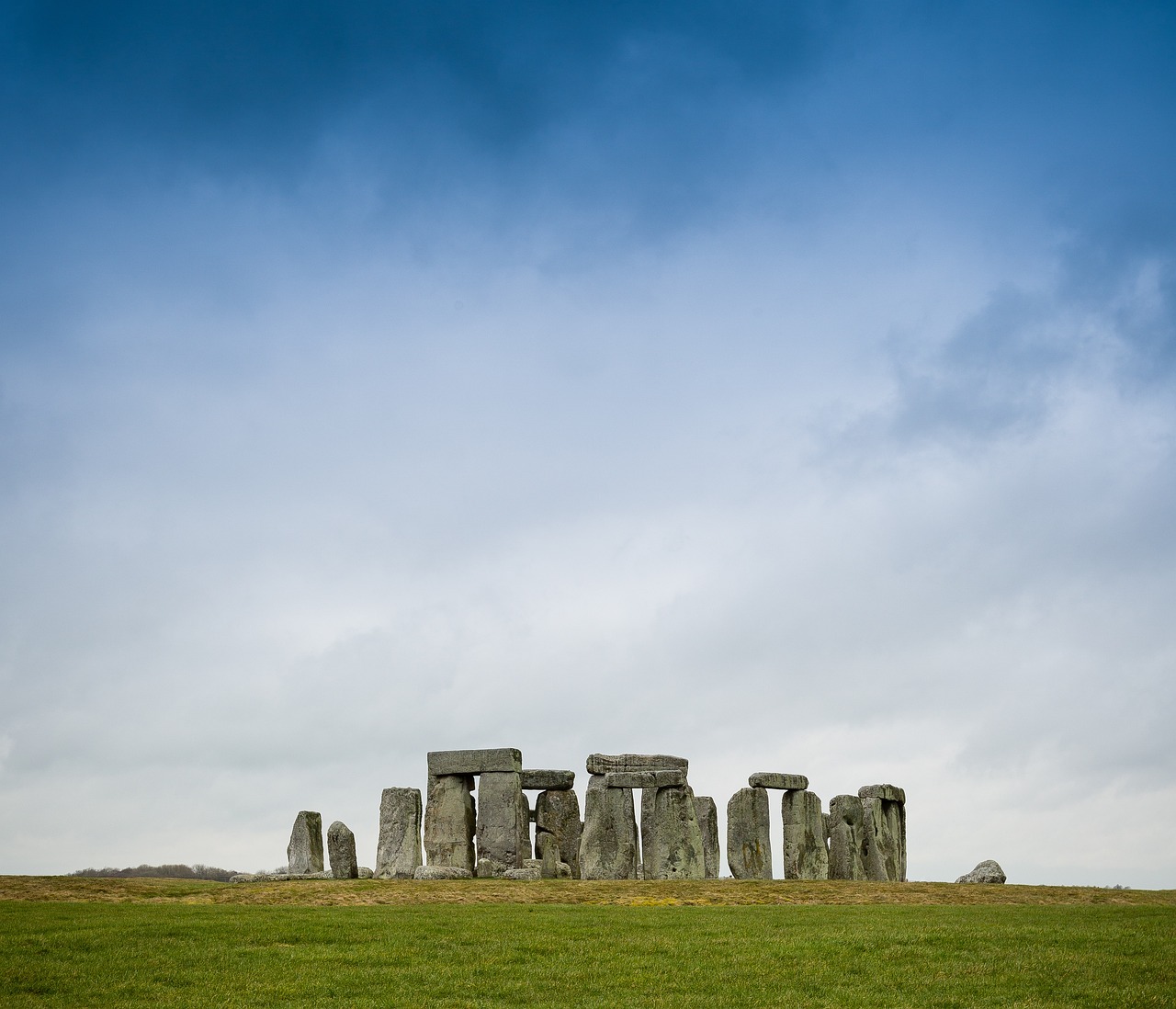
Economic and Social Structures
The Ugaritic civilization was not only known for its cultural and linguistic contributions but also for its intricate economic and social structures. At the heart of Ugarit's society was a well-developed trading network that connected it to other ancient civilizations in the region. The city's strategic coastal location made it a hub for maritime trade, facilitating the exchange of goods such as textiles, metals, and pottery. Moreover, Ugarit's economy thrived on agriculture, with the cultivation of grains, fruits, and olives playing a vital role in sustaining the population. In terms of social organization, Ugarit was divided into distinct classes, including the ruling elite, priests, artisans, and laborers. The governance system was hierarchical, with a king at the top overseeing administrative affairs and maintaining law and order. The presence of temples and religious institutions also underscored the close connection between religion and social structures in Ugaritic society. Religious practices influenced various aspects of daily life, from governance decisions to trade agreements. Furthermore, the discovery of administrative texts in Ugaritic literature sheds light on the bureaucratic system that governed economic transactions and resource management. These texts provide insights into the taxation system, land distribution, and labor practices prevalent in Ugarit. The meticulous record-keeping and accounting practices of the Ugaritic civilization demonstrate a sophisticated level of organization and governance, reflecting a society that valued order and efficiency in its economic and social affairs. Overall, the economic and social structures of Ugarit reveal a complex and interconnected society that thrived on trade, agriculture, and religious practices. The legacy of Ugarit's economic and social systems can be seen in the influence it had on subsequent civilizations in the region and its contribution to the development of commerce and governance systems in the ancient Near East.
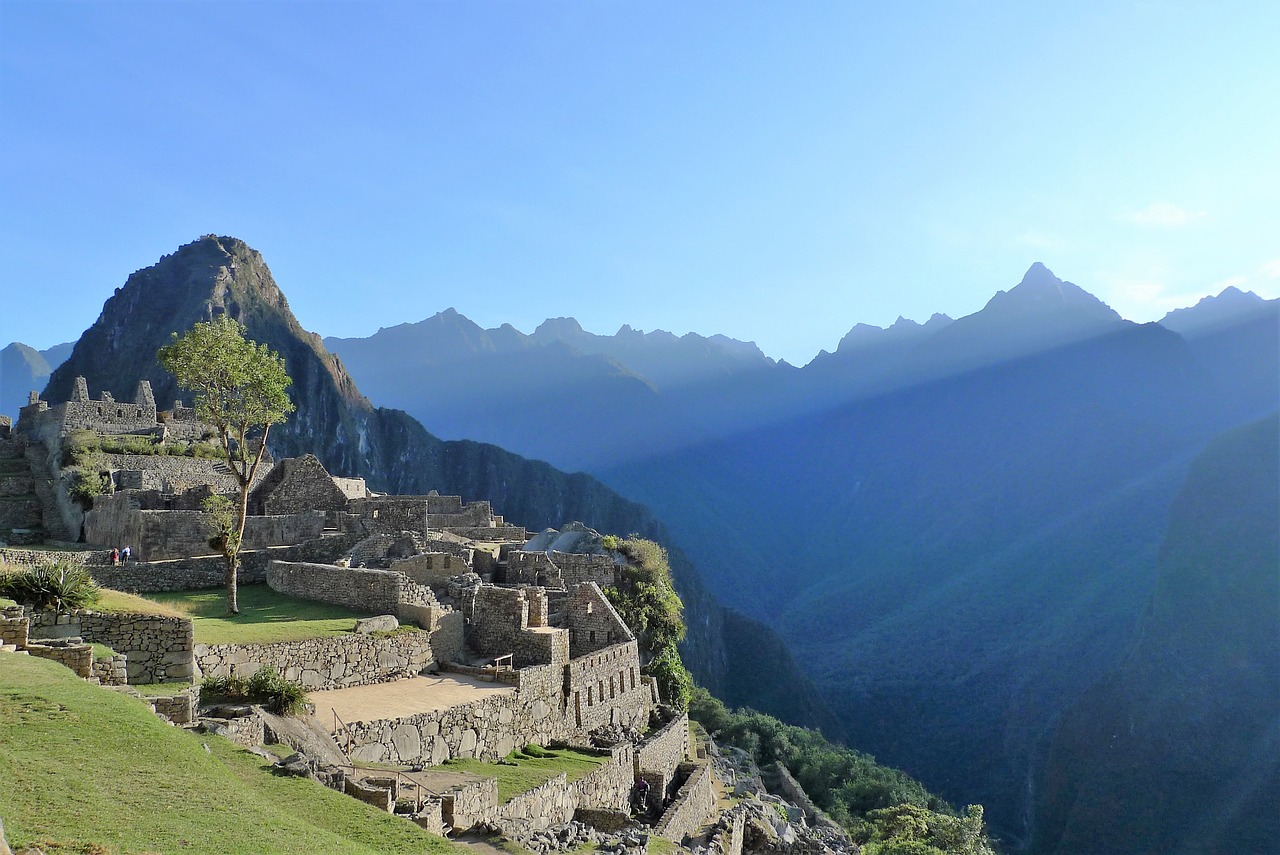
Art and Architecture
The art and architecture of the Ugaritic civilization are a testament to the creativity and skill of its people. The city of Ugarit was adorned with magnificent structures and artistic expressions that reflected the cultural richness of the society. One of the most striking features of Ugaritic architecture was the use of mud bricks in construction, showcasing the architectural ingenuity of the time. The city's buildings were adorned with intricate carvings and decorations, depicting scenes from daily life, religious rituals, and mythological stories.
Ugaritic art was equally impressive, with a focus on intricate craftsmanship and symbolic representations. Artifacts discovered in Ugarit reveal a deep connection to nature and the spiritual beliefs of the civilization. The use of symbols and iconography in Ugaritic art was prevalent, with each symbol carrying significant meaning and cultural relevance. These artistic expressions served as a visual language, conveying stories and beliefs that were integral to the Ugaritic way of life.
The artistic legacy of Ugarit extends beyond its time, influencing later cultures and artistic movements. The intricate designs and symbolic motifs found in Ugaritic art have inspired artists and scholars for centuries, shedding light on the artistic sophistication of this ancient civilization. The architectural marvels of Ugarit stand as a testament to the ingenuity and creativity of its inhabitants, leaving a lasting impact on the history of art and architecture.

Iconography and Symbols
Iconography and Symbols in the Ugaritic civilization hold a wealth of meaning and cultural significance, offering a window into the beliefs and practices of this ancient society. The intricate symbols and imagery found in Ugaritic art provide valuable insights into their religious, social, and political structures. Symbols such as the bull, lion, and tree of life were commonly depicted in various contexts, each carrying specific connotations and representing different aspects of Ugaritic life.
One of the most prominent symbols in Ugaritic art is the lotus flower, symbolizing purity and rebirth. Often depicted in conjunction with gods and goddesses, the lotus flower signifies divine presence and spiritual enlightenment. Additionally, the sun disk symbolizes power and vitality, reflecting the importance of the sun in Ugaritic religious beliefs and agricultural practices.
The double-headed axe is another significant symbol in Ugaritic iconography, representing strength and protection. Often associated with warrior deities and used in religious ceremonies, the double-headed axe embodies the martial prowess and divine authority revered by the Ugaritic people.
Moreover, the serpent holds a dual symbolism in Ugaritic culture, signifying both evil and wisdom. Depicted in various contexts, the serpent represents the eternal struggle between darkness and enlightenment, reflecting the complex worldview of the Ugaritic civilization.
The intricate motifs and patterns found in Ugaritic artifacts showcase the artistic sophistication and craftsmanship of the society. From intricate geometric designs to elaborate figurative representations, Ugaritic artistry reflects a deep connection to nature, spirituality, and the divine.
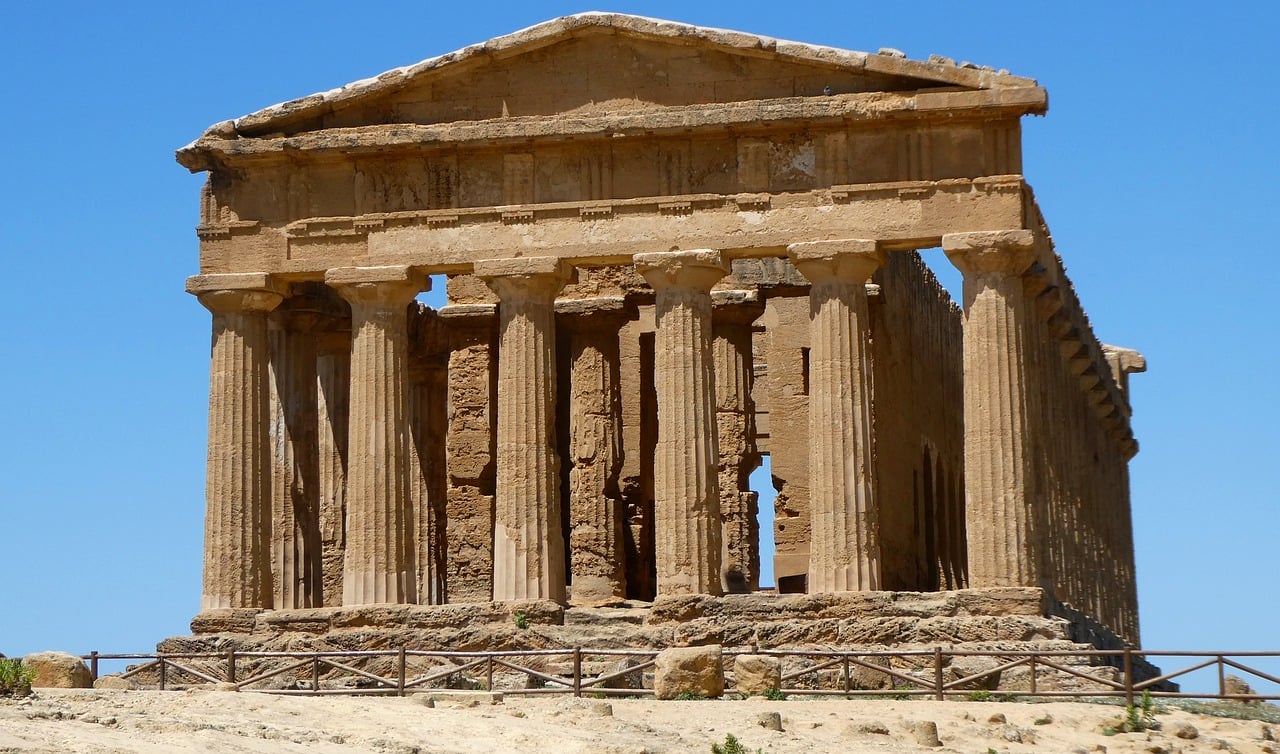
End of the Ugaritic Civilization
As we delve into the intriguing history of the Ugaritic civilization, we inevitably reach a somber chapter marked by the end of this ancient society. The demise of Ugarit, a once-thriving city-state on the eastern Mediterranean coast, remains shrouded in mystery and speculation. Scholars and archaeologists have pieced together fragments of evidence to decipher the factors that contributed to the downfall of this remarkable civilization.
One of the prevailing theories surrounding the end of the Ugaritic civilization revolves around the catastrophic events that befell the city. The archaeological record suggests that Ugarit faced a series of natural disasters, including earthquakes and tsunamis, which wreaked havoc on its infrastructure and population. These calamities may have severely weakened the city, making it vulnerable to external threats and disruptions in trade routes.
Moreover, the geopolitical landscape of the ancient Near East was fraught with conflicts and power struggles among various kingdoms and empires. Ugarit, situated at a strategic crossroads between major powers such as Egypt and Hatti, likely found itself caught in the crossfire of rivalries and invasions. The city's defenses may have been inadequate to withstand the onslaught of aggressive neighbors, leading to its eventual downfall.
Additionally, internal factors such as social unrest, economic instability, and political upheaval could have contributed to the decline of Ugarit. Disparities in wealth and power within the society, coupled with resource depletion and environmental challenges, may have eroded the foundations of the city-state. The once-prosperous trading hub faced internal strife and external pressures that ultimately sealed its fate.
Despite the tragic end of the Ugaritic civilization, the legacy of this ancient culture endures through its contributions to language, literature, and art. The clay tablets bearing Ugaritic texts unearthed from the ruins of the city continue to fascinate scholars and enthusiasts alike, offering a glimpse into the rich tapestry of Ugaritic society. While the physical remnants of Ugarit may have crumbled, its spirit lives on in the annals of history, leaving an indelible mark on the cultural heritage of humanity.

Legacy of Ugarit
The legacy of the Ugaritic civilization is profound and far-reaching, leaving an indelible mark on the course of history. Through its language, literature, and cultural practices, Ugarit has influenced subsequent cultures and played a pivotal role in the development of alphabetic writing systems.
One of the most significant legacies of Ugarit is its alphabet, which consisted of 30 letters and served as the basis for many modern alphabets. This innovation revolutionized communication and paved the way for the written word to become more accessible and widespread.
Furthermore, the literary texts discovered in Ugarit provide valuable insights into the religious beliefs, societal norms, and daily life of its inhabitants. These ancient writings offer a glimpse into the past and help us understand the complexities of Ugaritic culture.
Ugarit's influence extended beyond its borders, impacting neighboring civilizations and shaping the cultural landscape of the ancient Near East. The exchange of ideas, trade routes, and diplomatic relations facilitated by Ugarit contributed to a rich tapestry of interconnected societies.
The architectural achievements of Ugarit also contribute to its lasting legacy. The city's impressive structures and artistic expressions reflect the creativity and ingenuity of its people, showcasing a sophisticated understanding of design and aesthetics.
In conclusion, the legacy of Ugarit endures through its language, literature, art, and architectural marvels, underscoring the enduring impact of this ancient civilization on the world as we know it today.
Frequently Asked Questions
- What is the significance of the Ugaritic civilization?
The Ugaritic civilization holds great significance in history due to its contributions to the development of writing systems, its unique language and literature, and its influence on subsequent cultures.
- How was the Ugaritic language discovered?
The Ugaritic language was discovered through the excavation of the ancient site of Ugarit in modern-day Syria, where clay tablets containing the Ugaritic alphabet and literary texts were found.
- What insights do Ugaritic texts provide into daily life?
Ugaritic texts offer insights into various aspects of daily life, including religious practices, economic activities, social structures, and governance systems of the civilization.
- What is the legacy of the Ugaritic civilization?
The legacy of the Ugaritic civilization can be seen in its lasting impact on subsequent cultures, languages, and the development of alphabetic writing systems, influencing the course of history.


